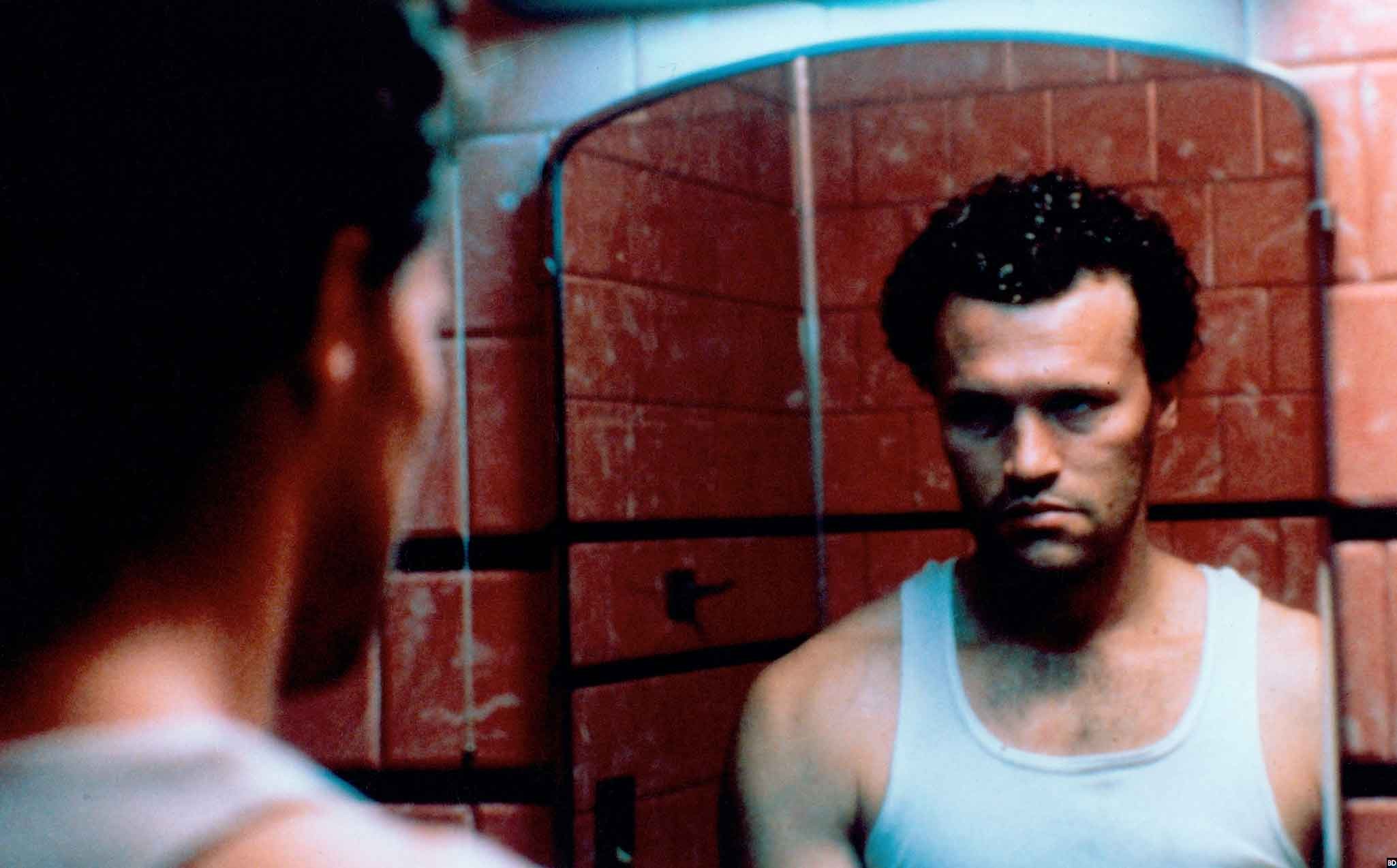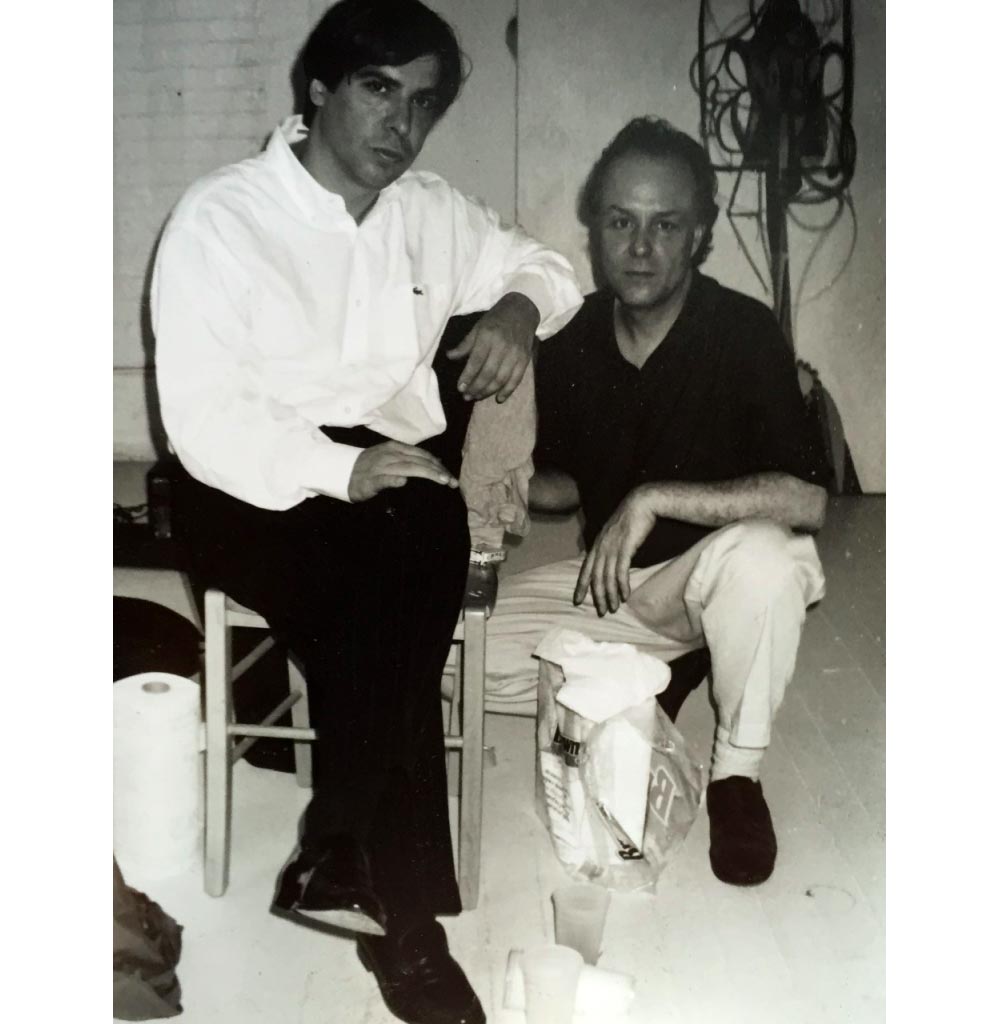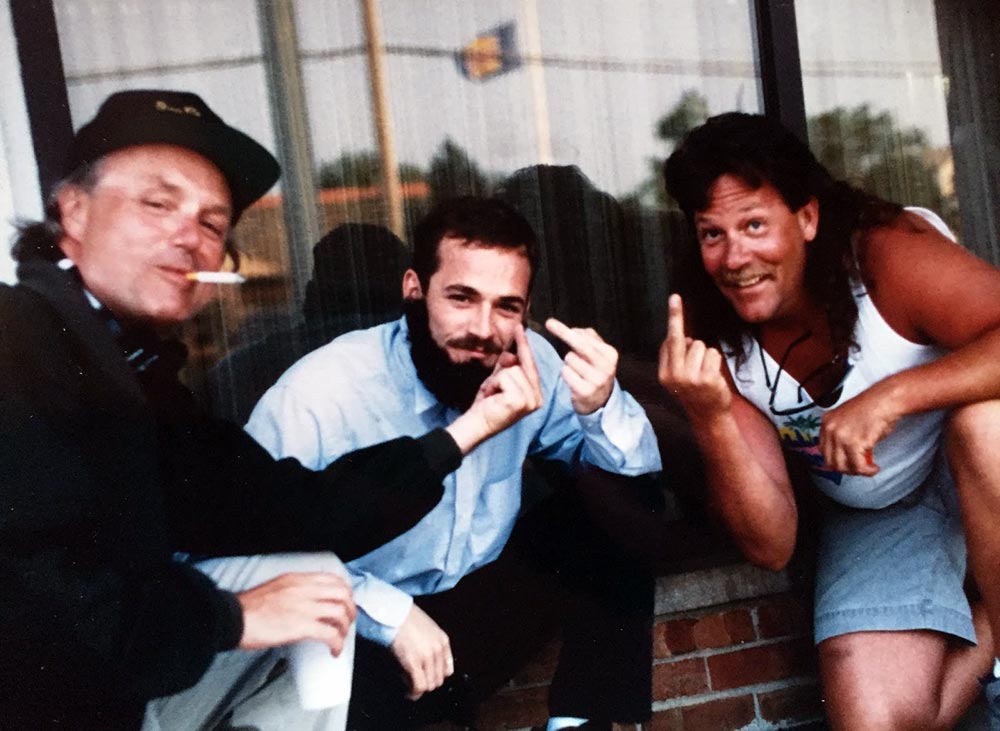In an act of tremendous public service, Nitehawk Cinema is now presenting the first U.S. retrospective of director John McNaughton. For three decades, his underappreciated filmography has surveyed the American landscape and the desperate strivers fighting against its undertow. You can feel the humidity of the bayou country in Wild Things (1998), and the crushing blankness of the Chicago suburbs in Normal Life (1996) as vividly as L.A.’s skid row in The Borrower (1991). Public attention and studio checkbooks have waxed and waned since his X-rated, Ebert-championed debut, Henry: Portrait of a Serial Killer (1984), but this series makes clear McNaughton’s consistent ability to work his seedy, class-conscious intensity into a variety of genres—documentary, gangster comedy, neo-noir thriller, domestic drama, horror, sci-fi—and on an uncommonly wide range of budgets.
The series showcases most of McNaughton’s features on celluloid, with the man himself in attendance for tonight’s screening of Wild Things, Condo Painting (2000) on Saturday, and Normal Life on Sunday. I recently spoke with McNaughton about the VHS distribution business, true crime, carnivals, and working with actors. This conversation has been edited for length and clarity.

Patrick Dahl: There's a frustrating lack of material about you available, but I managed to track down some old interviews. I read that when you were growing up, you were more interested in television than films, and I was kind of wondering if there was a transition to cinephilia?
JM: I originally went to school for art. What really interested me as a kid growing up was fine art. I was an only child and I grew up in the great era of postwar television. I went to the movies and loved movies, but I wasn’t a hardcore cinephile. Once I got indoctrinated into the world of fine art, I saw cinema [as an art form.] I wasn’t a fan kid; I was more likely to be at the Art Institute seeing a [René] Magritte exhibit than the latest William Castle film. I started out making horror films because that was what I was offered. I was more of an Ingmar Bergman fan.
Creatively, the greatest influence on my life had been television, because that’s what I did. Home alone in Chicago, I watched and I was an expert. I could have told you the credits of any TV show. I watched and loved them all. There was a point when I was studying fine art at the University of Illinois when I had, shall we say, an epiphany—this was the ‘60s—and I transferred my interest into cinema, because cinema was indeed more of an art form than television, especially in those days.
PD: You mentioned Bergman. Were there other filmmakers who kind of knocked you out during that time?
JM: Well, being a television aficionado, I saw reruns of all the great Hollywood films. Every evening there were movies, and the more contemporary movies started playing on the networks. I got an education from that.
They would do foreign films on WGN [local Chicago superstation]. By the time I got to college, I was able to see double features of films that were a couple years old. You could see both for like two bucks. On the weekends, they would have these incredible retrospectives. I literally saw every Bergman, every Fellini, every Kurosawa, every Visconti.
PD: Can I ask a delicate question? Your most recent film, The Harvest, was released in 2013. Do you consider yourself retired, or are you working on things?
JM: Oh no, I was hired to write a screenplay recently and I just finished two weeks ago. Our careers run hot and cold, and as one grows older, a new class always emerges in Hollywood. The new youngsters who are running various production entities want to hire the people that they went to film school with.
I think I’ll still make some films. I’ve written quite a few things and now it’s a matter of trying to get those things into the pipeline. So we’ll see. I published my first graphic novel during the pandemic, Carny Kill. I optioned the book [Robert Edmond Alter’s 1966 novel of the same name] in 1987 and wrote a screenplay, which I couldn’t get made. I had to let the option drop. Then, during the pandemic, for some reason, I hooked up with an old college roommate from art school. A really gifted artist, Tony Byrnes. We spent a year-and-a-half making a graphic novel from the script I had written. We only printed 100 copies and we’re not selling them because I used the faces of actors I’ve worked with. Luke Perry is the lead, and there are a lot of deceased actors from the Golden Age of Cinema. I didn’t have permission for any of that, so I just printed 100 copies and gave them away as works of art. If anybody wants to file a lawsuit, there’s nothing to get. 100 copies given away. There’s no money.
PD: Not hard to cease-and-desist in those circumstances.
JM: When I was in the carnival, I photographed it as well. I’ve got just tons of Kodachrome of The Royal American Shows, the world’s largest traveling carnival, during the 1975 season. I’m going to do a photo-book with text from those carnival days—I think that might be the title.
PD: To rewind a bit, I’m curious about your art school experience. Was there a medium you had in your sights before cinema?
JM: Since childhood, I knew I would be an artist of some kind. I learned to paint, draw, and sculpt. Like I said before: I had a late ‘60s epiphany after two years in art school. I realized I had gotten all I could from art school. They weren’t going to teach me anything more.
PD: Did you imagine a career as an artist?
JM: In the neighborhood I was from, there weren’t parents who were shining lights of influence. No one was connected to the world of entertainment, or the world of cinema. They were connected to factories, steel mills, and construction sites. Working class. I didn’t see a career path in art, but I knew I would be involved in the arts.
During my epiphany, I decided to pursue a career in television. There were few places where you could learn and I decided on Columbia College in Chicago. They weren’t focused on dramatic productions; it was about newscasts, mostly. But I spent a lot of time doing still photography on the streets of Chicago. The school had fabulous dark rooms and any kind of gear.
Once I graduated college, there were no jobs. Plenty of bait-and-switch listings. Nobody from my graduating class was getting anything except telephone sales. I finally had to revert to my background and worked at a tractor factory. I worked 19 months in that factory running some really horrific machines, and that’s the longest continuous employment I’ve ever had.
I then got a job in the advertising business, but my marriage was crumbling and I was unhappy, so I quit and was aimless for a while until I found the carnival. I toured with them for a year and when that was over, I bought a 1950 Plymouth Business Coupe and I drove it to New Orleans. I was sleeping on my friend’s sun porch and saw an ad for a silversmith’s apprentice in the paper. I borrowed my friend’s suit and got the job. When that business went under, I got a job building big racing sailboats. After a drunken fistfight at four or five in the morning, I said to myself: “What the fuck are you doing? It’s time to go home and do what you were meant to do, which is become a movie director.” I didn't know where to start, but I was gonna do it or I was gonna die.
In Chicago I made a connection with a company that eventually became MPI. They were the company that funded Henry: Portrait of a Serial Killer. They were having great success with video cassette distribution. They were buying the rights to horror films, which were very cheap. I got to be pretty good with the Jordanian brothers, Malik and Waleed Ali, who owned the company. Waleed was very much a visionary and one day he said, “I’ll give you $100,000 to make a horror film.” It was my lucky day.

PD: So they pitched you? You didn't pitch them?
JM: Well, we had talked. Waleed always said, “One day… One day… One day John, you and I are going to make a real movie.” Then, after a couple of years he said, “Today’s the day and I’m going to give you $100,000 to make a horror film.”
I had no idea how to do it because I wasn’t a horror film person necessarily. I liked horror films, but I wasn’t a fanatic. He left it to me: “You choose the subject matter, all I need is a horror film.” He wanted to keep the rights because distribution rights were getting smaller and smaller, and the prices were getting higher and higher.
PD: You have a prompt to make a horror film and you have a budget. I'm curious how you went from that to settling on a very gritty, almost vérité style for Henry?
JM: After finishing my conversation with Waleed, I realized that this was my day, this was my dream, and I better not screw it up. I left his office and walked down the hall to tell Gus Kavouris, a friend who had gotten me the job. We used to play in bands in high school. I told him I was supposed to make a horror film. He asked me about my subject and I said I had no idea. He said, “Watch this,” and loaded the VCR with a 20/20 segment about Henry Lee Lucas.
I had never heard the term “serial killer” before. I had always been interested in true crime, but the term had only recently been minted by the FBI. I saw footage of Lucas and his accomplice, Ottis Toole, and thought, “If I saw these two guys walking down the street, I would turn around and run as fast as I could.”
PD: Both of them looked the part.
JM: I watched that 20-minute segment and I thought, “There it is. That’s horror.” I met Richard Fire, an actor-writer who was co-artistic director of the Organic Theater Company with Stuart Gordon, and we wrote the screenplay together.
PD: Was the tone always the same? I think that’s what really knocks you over the head. The tone just gets under your skin.
JM: I wanted it to be good. Richard was slumming it a bit. He came out of theater and was writing Henry to pay the rent. I probably brought more of the exploitation angle to it—let’s make sure we get a certain amount of gore. Richard was talking about the Aristotelian unities of space and time. Opposites attract, and we were a great team.
PD: The biggest revelation for me in your retrospective was Normal Life. It hadn’t been on my radar.
JM: Fine Line dumped it. That project was based on a true story. There really was a couple like that. Almost everything that’s in that movie really happened, and we shot on the same locations where these things happened. One of the banks in the movie is a bank that the real couple actually robbed. The bank manager was there when we shot, and he had also been there during the robbery. They robbed at least a dozen banks using disguises, but they’d only walk out with like $7,000. The banks aren’t keeping like a million bucks in the till. The two became local celebrities.

PD: I love so many aspects of that movie, but I think my favorite might be that you really present these locations as they are. You could have spent 1 million dollars on sets and you wouldn’t have been able to approach the banality and blankness of the strip malls and banks. But it's like, that's real, that's our material existence in America. We spend most of our time in places like this, but we never see them.
JM: Normally when you scout locations, you’re looking for interesting architecture—cool architecture, cool looking places. “Oh wow, look at that! That’s good!” Scouting Normal Life was kind of a drag because we were looking for pablum. The blandest, most nondescript, uninspiring landscape with jet-liners flying through on the way to and from O’Hare airport, which is the reason that whole neighborhood grew in the first place.
A journalist had written the story of these two bank robbers: the Ericksons. While we were trying to get the rights, we learned about a married Brooklyn couple, Peg Haller and Bob Schneider, who had done their own research and done their own script on the Ericksons. William Morris sent the script to me with the idea that it would be a vehicle for Luke Petty. At the time, Aaron Spelling was pushing Luke Perry toward a movie career. I had never really watched 90210 [1990 - 2000], so he wasn’t a big deal to me. But I met him. Something I learned a long time ago is that you should always meet the actor. Whatever it is they’ve done to make them famous, they may be capable of so much more, so meet them and see how you feel about them.
PD: How do you approach working with actors? There are great performances in all of your films—intense, complicated, often subtle. There’s a range of acting styles, but they all have depth. Have you developed theories on working with actors, or is it a more intuitive approach?
JM: I think about the life I’ve lived. Humble beginnings. When you’re traveling with a carnival, you’re going to meet lowlifes. You’re going to learn about low life people. Some of them are reprehensible and some are fabulous people. Then you get into the movie business and you’re hanging out with Princess Caroline.
I’ve met and spent time with people from the bottom and every increment all the way to the top, so when I’m working with a character, I go: “This character is a lot like somebody I knew. A little bit of Joe, a little bit of Pete. She’s a little like Mary I knew from high school, but a lot like Erin I knew from the carnival.” You sort of piece together true behavior from people you’ve known. And I let actors know that they’re going to have a safe space around them to really push it. I’m not going to limit you. You go as far as you can go and if it doesn’t work, we’ll do another take. Get as crazy as you want to get in pursuit of excellence. It’s worked out pretty well, because if you pick the right person for the role you’re usually not disappointed.
PD: Is there a film in the series you’re most excited for people to see?
JM: Did you ever see Condo Painting? That’s the most fun I ever had making a movie. An acquaintance at Pace Gallery wanted me to do a short, maybe 15-minute promo about George Condo that would be shown during a gallery opening.I was introduced to George and we hit it off. George never drank a bottle of wine that cost less than three hundred dollars in his life and I was a wine aficionado. He was a wild character with a wild sense of humor. We hit it off immediately. So we thought, “15 minute short? Fuck that!” We decided to make a movie. And we did. We had the most fun making that movie. The triumvirate of the beatniks is [Jack] Kerouac, [Allen] Ginsburg, and William Burroughs. When we made the movie, only Ginsburg and Burroughs were still alive—and they’re both in the movie.
PD: It’s your most experimental work. Have you considered going back to that vein? Or did you get it out of your system?
JM: Destiny plays such a huge part. I wasn’t intending to make a documentary. I was in New York working on an episode of Homicide: Life on the Street [1993 - 1999]. But I was introduced to George and the whole thing came out of left field. I was never much of a publicity seeker. I’ve done lots of interviews over the years, but a lot of it was done before there was internet. I have stacks of material in storage, and someday I’ll start digging through that stuff, but all I can say is that I hope to get back to work and make another movie or two.
Portraits of Wild Things runs September 19 - October 7 at Nitehawk Prospect Park.



